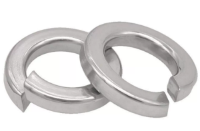Comprehensive Guide to ODM Drywall Screw Length and Specifications
Understanding the ODM Drywall Screw Length Chart A Comprehensive Guide
When it comes to drywall installation, selecting the right screws is crucial for ensuring a secure and stable construction. Among the various types of screws available, ODM drywall screws have gained popularity in both professional and DIY markets due to their reliability and effectiveness. One key aspect that needs to be understood when working with these screws is the significance of the drywall screw length chart. This guide aims to clarify the importance of the length chart and how to use it effectively for your drywall projects.
What Are ODM Drywall Screws?
ODM (Original Design Manufacturer) drywall screws are specifically designed for attaching drywall sheets to wall studs, ceilings, and other framing materials. They typically feature a sharp point and a fine thread that enables them to penetrate drywall easily and grip the underlying material securely. Available in various lengths and diameters, choosing the right screw is essential to ensure proper fastening.
The Importance of Screw Length
The length of a drywall screw plays a critical role in its performance. If the screw is too short, it may not provide sufficient hold, leading to sagging drywall or, in worst-case scenarios, complete structural failure. Conversely, using a screw that is too long can puncture electrical wiring or plumbing hidden within the walls. Therefore, understanding the appropriate lengths for different applications is vital.
Decoding the ODM Drywall Screw Length Chart
A drywall screw length chart provides a detailed reference for selecting the correct screw length based on the thickness of the drywall being used and the type of framing material. Here are some common screw lengths and their typical applications
1. 1 1/4 Inch Screws These screws are generally used for attaching 1/2 inch drywall to wood or metal studs. They provide enough grip while ensuring that the screw tip does not extend too far into the framing.
2. 1 5/8 Inch Screws Commonly used for 5/8 inch drywall, these screws are ideal for ceilings or walls where additional strength is needed. Their length provides a secure hold and helps prevent sagging.
odm drywall screw length chart

3. 2 Inch Screws Perfect for thicker drywall applications, such as attaching 3/4 inch drywall to wood studs, these screws ensure a robust connection. They are also commonly used where extra stability is required.
4. 2 1/2 Inch and Longer Screws These longer screws are generally reserved for special applications, such as securing thicker materials or where added structural integrity is necessary.
How to Use the Length Chart
When consulting the ODM drywall screw length chart, consider the following
- Thickness of the Drywall Measure the thickness of the drywall panels you intend to use. Most standard panels are either 1/2 inch or 5/8 inch thick, but there are other thicknesses available as well.
- Type of Framing Material Whether you are working with wood or metal studs can also influence your choice of screw length. The screw needs to penetrate at least 3/4 inch into the framing for optimal grip.
- Project Requirements Consider the specific requirements of your project. For instance, ceilings might require longer screws for better weight distribution.
Conclusion
In summary, understanding and utilizing the ODM drywall screw length chart is essential for anyone undertaking drywall installation. By carefully selecting the correct screw length based on drywall thickness and framing type, you can ensure a secure and efficient installation. This not only enhances the durability of the drywall but also provides a safe and stable environment.
Investing some time to familiarize yourself with the screw length chart will pay off in your project’s success. Armed with this knowledge, you’ll be more prepared to tackle your drywall projects, whether they are large renovations or simple repairs. Remember, the right fastener is just as important as the material itself, so don’t take shortcuts when it comes to securing your walls.
-
Top Choices for Plasterboard FixingNewsDec.26,2024
-
The Versatility of Specialty WashersNewsDec.26,2024
-
Secure Your ProjectsNewsDec.26,2024
-
Essential Screws for Chipboard Flooring ProjectsNewsDec.26,2024
-
Choosing the Right Drywall ScrewsNewsDec.26,2024
-
Black Phosphate Screws for Superior PerformanceNewsDec.26,2024
-
The Versatile Choice of Nylon Flat Washers for Your NeedsNewsDec.18,2024










